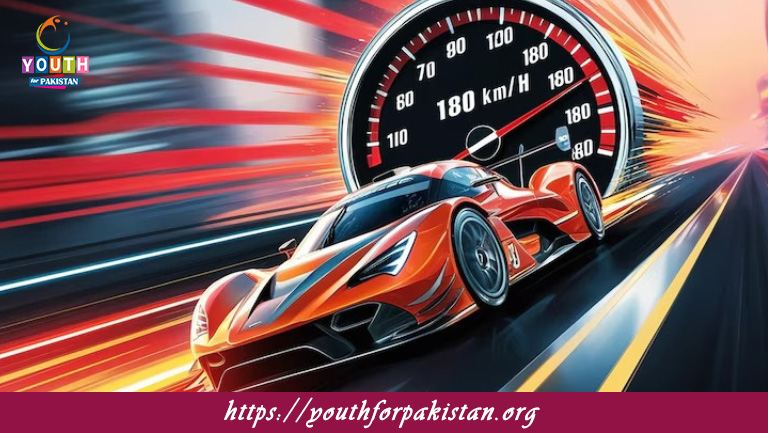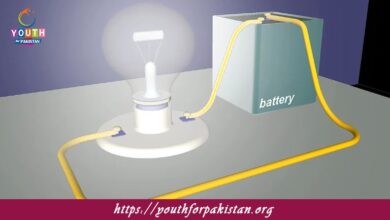Acceleration MDCAT MCQs with Answers

Welcome to the Acceleration MDCAT MCQs with Answers. In this post, we have shared Acceleration Multiple Choice Questions and Answers for PMC MDCAT 2024. Each question in MDCAT Physics offers a chance to enhance your knowledge regarding Acceleration MCQs in this MDCAT Online Test.
Acceleration MDCAT MCQs Test Preparations
Acceleration is defined as:
a) The rate of change of distance
b) The rate of change of velocity
c) The total distance traveled divided by time
d) The speed of an object
If an object’s velocity increases from 20 m/s to 30 m/s in 5 seconds, its acceleration is:
a) 2 m/s²
b) 10 m/s²
c) 5 m/s²
d) 1 m/s²
An object experiencing constant acceleration will have a velocity-time graph that is:
a) A straight line with a positive slope
b) A horizontal line
c) A vertical line
d) A curved line
The unit of acceleration is:
a) m/s
b) m/s²
c) km/h
d) m
Acceleration can be calculated by:
a) Change in distance / Time
b) Change in velocity / Time
c) Velocity / Time
d) Distance / Time
If a car decelerates from 60 m/s to 20 m/s in 8 seconds, its acceleration is:
a) -5 m/s²
b) -10 m/s²
c) 5 m/s²
d) 10 m/s²
The acceleration due to gravity near the Earth’s surface is approximately:
a) 9.8 m/s²
b) 10 m/s²
c) 9.8 km/h²
d) 10 km/h²
An object in free fall has an acceleration equal to:
a) The acceleration due to gravity
b) Zero
c) The object’s velocity
d) The change in speed
If an object’s velocity decreases from 40 m/s to 10 m/s in 6 seconds, its acceleration is:
a) -5 m/s²
b) -10 m/s²
c) 5 m/s²
d) 10 m/s²
If an object accelerates at 4 m/s² for 5 seconds, its change in velocity is:
a) 20 m/s
b) 4 m/s
c) 5 m/s
d) 2 m/s
Uniform acceleration means:
a) The object’s velocity is changing at a constant rate
b) The object’s velocity is constant
c) The object’s speed is increasing
d) The object is at rest
If an object’s velocity changes by 15 m/s in 3 seconds, its acceleration is:
a) 5 m/s²
b) 45 m/s²
c) 10 m/s²
d) 3 m/s²
A car increases its velocity from 20 m/s to 50 m/s in 6 seconds. The average acceleration is:
a) 5 m/s²
b) 3.33 m/s²
c) 10 m/s²
d) 30 m/s²
Acceleration is a vector quantity because:
a) It has magnitude only
b) It has both magnitude and direction
c) It only affects speed
d) It is always positive
The formula for acceleration when initial and final velocities and time are known is:
a) a = (v – u) / t
b) a = (u + v) / t
c) a = u / t
d) a = v / t
If an object’s acceleration is zero, the object:
a) Is at rest
b) Is moving with constant velocity
c) Is accelerating uniformly
d) Has a changing velocity
The acceleration of an object moving in a straight line with constant velocity is:
a) Zero
b) Constant
c) Increasing
d) Decreasing
If a car’s acceleration is 3 m/s², what is its change in velocity after 4 seconds?
a) 12 m/s
b) 7 m/s
c) 8 m/s
d) 15 m/s
In a velocity-time graph, the area under the curve represents:
a) Displacement
b) Acceleration
c) Speed
d) Time
If an object starts from rest and accelerates at 6 m/s² for 10 seconds, its final velocity is:
a) 60 m/s
b) 6 m/s
c) 100 m/s
d) 30 m/s
The acceleration of an object is defined as:
a) Change in distance divided by time
b) Change in velocity divided by time
c) Speed divided by distance
d) Distance divided by time
If an object’s acceleration is negative, it indicates:
a) The object is speeding up
b) The object is slowing down
c) The object is at rest
d) The object is moving at constant velocity
The acceleration due to gravity on the Moon is approximately:
a) 1.6 m/s²
b) 9.8 m/s²
c) 10 m/s²
d) 5 m/s²
An object accelerating uniformly will have a velocity-time graph that is:
a) A horizontal line
b) A straight line with a constant slope
c) A curve
d) A vertical line
If a car travels with an acceleration of 4 m/s², what will be its velocity after 3 seconds if it started from rest?
a) 12 m/s
b) 7 m/s
c) 4 m/s
d) 3 m/s
In a situation where the acceleration is constant, the velocity-time graph will be:
a) A horizontal line
b) A vertical line
c) A straight line with a slope
d) A curve
An object accelerating at -3 m/s² is:
a) Speeding up
b) Slowing down
c) Moving with constant velocity
d) At rest
The area under an acceleration-time graph represents:
a) Velocity
b) Displacement
c) Acceleration
d) Time
If an object has an initial velocity of 5 m/s and accelerates at 2 m/s² for 4 seconds, its final velocity is:
a) 13 m/s
b) 15 m/s
c) 9 m/s
d) 7 m/s
Acceleration is:
a) The rate of change of speed
b) The rate of change of displacement
c) The rate of change of velocity
d) The total distance divided by time
If an object’s velocity changes by 8 m/s in 4 seconds, its acceleration is:
a) 2 m/s²
b) 8 m/s²
c) 4 m/s²
d) 1 m/s²
The final velocity of an object accelerating uniformly can be calculated using the formula:
a) v = u + at
b) v = u – at
c) v = at
d) v = u / t
If a ball is thrown upwards with an initial velocity of 20 m/s and acceleration due to gravity is -9.8 m/s², the time to reach the highest point is:
a) 2 seconds
b) 1 second
c) 4 seconds
d) 5 seconds
An object that is accelerating has:
a) A constant velocity
b) A changing velocity
c) A constant speed
d) Zero displacement
If an object accelerates from rest to 20 m/s in 4 seconds, its acceleration is:
a) 5 m/s²
b) 4 m/s²
c) 20 m/s²
d) 10 m/s²
Acceleration can be positive, negative, or:
a) Zero
b) Constant
c) Varying
d) Uniform
The rate at which an object’s velocity changes is called:
a) Speed
b) Displacement
c) Acceleration
d) Force
If an object travels with an acceleration of 0 m/s², it is:
a) Accelerating uniformly
b) Moving with constant velocity
c) At rest
d) Speeding up
The acceleration of a body moving with a uniform velocity is:
a) Positive
b) Zero
c) Negative
d) Variable
If an object has an initial velocity of 10 m/s and accelerates at 3 m/s² for 5 seconds, its final velocity is:
a) 25 m/s
b) 15 m/s
c) 20 m/s
d) 35 m/s
If you are interested to enhance your knowledge regarding Physics, Chemistry, Computer, and Biology please click on the link of each category, you will be redirected to dedicated website for each category.





